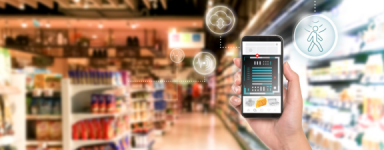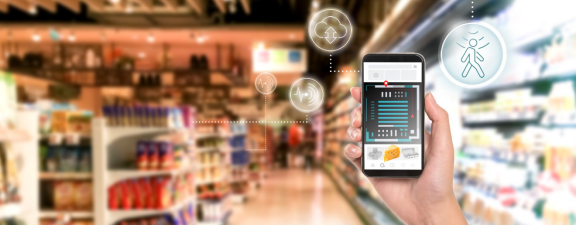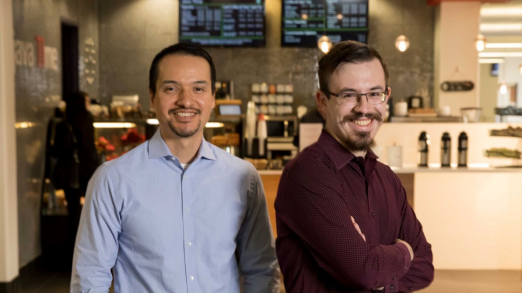
How smart stores equipped with multiple sensors make shopping a breeze
“On a Friday evening, you decided to make Mexican fish tacos, so on your way home from get off work, you hurriedly walked into a local supermarket. It only takes a few minutes to find coriander, or, more accurately, locate the empty shelf where coriander should be placed. Then after 10 minutes of queueing at the cashier with only one staff member, you finally got home, but found that you forgot to buy corn pancakes. Then you can only eat leftover casserole on Friday night.
“

On a Friday evening, you decided to make Mexican fish tacos, so on your way home from get off work, you hurriedly walked into a local supermarket. It only takes a few minutes to find coriander, or, more accurately, locate the empty shelf where coriander should be placed. Then after 10 minutes of queueing at the cashier with only one staff member, you finally got home, but found that you forgot to buy corn pancakes. Then you can only eat leftover casserole on Friday night.
Data moves almost at the speed of light, but grocery stores cannot. With the popularization of high-speed Internet, the speed of information transmission is getting faster and faster, but the efficiency of physical transactions necessary for buying and selling commodities has lagged behind. This situation is about to change.
Gustavo Martinez, a system engineer at our company, said: “Many large and small companies are working on using sensor technology and machine learning to improve the shopping experience. For example, customers are waiting in a long line of payment, or they find that the store does not have their own. They are frustrated by the items they want to buy, or if they feel that the items in this store are more expensive than others.”
Your personal shopping assistant
The combination of machine learning and GPS technology has enabled retailers to provide personalized advertisements when potential customers walk near the store. The next step is to use in-store sensors (such as Bluetooth beacons) to provide hyper-localized promotions on a single shelf.
These may trigger custom notifications on smartphones – for example, a half-price discount on vanilla wafers for customers who will stare at the cookie shelf for several minutes. In addition, replacing paper price tags with LCD displays can flexibly Display special prices on shelves and change as different customers approach.
Gustavo said that these smart displays can also guide customers to shop. He also said: “The store’s app can plan the most effective shopping route so that you can get all the items in the shopping list, and we can make the display in the shelf light up when you are close, so that you can find what you want. Items.”
The end of the queuing checkout era
One of the most significant changes in the in-store experience is the rise of self-checkout. This is not just about saving staff costs for the store.
Gustavo said: “The main thing is to eliminate queues for checkout. At least as far as I am concerned, waiting 10 or 15 minutes is the most annoying thing for me to go to the store.”
However, self-checkout is not perfect. Entering uncoded products (such as bulk fruits) is still a relatively laborious process, and it also requires store attendants to run back and forth between points of sale to help deal with issues and products with limited shelf life.
Aldwin Delcour, a system engineer at our company, said: “Some companies are considering integrating cameras into self-checkout systems. This way, the system can use machine vision to identify the items you buy. You don’t need to search for a complete menu anymore. , Just put the Apple in front of the camera and the system will automatically recognize it.”
Although more and more self-service checkouts have not completely replaced queuing checkouts, the era of queuing checkouts may be coming to an end. In stores that are at the forefront of retail automation, customers can scan their phones when they walk to the self-checkout system. Then, the combination of the camera and the sensors in the shelf can record and settle the items in the customer’s shopping basket, and then automatically generate a bill when they leave.
Currently, this requires machine learning algorithms to send data streams from possibly hundreds of thousands of stores to the cloud for processing.
Gustavo said: “A lot of data will be pumped away, which will bring huge challenges. Therefore, we are studying how to deal with these data in the store to reduce the load.”

Gustavo Martinez (left) and Aldwin Delcour (right)
TI’s millimeter-wave sensor can reflect high-frequency radio waves to an object to accurately identify the shape, size and distance of the object. Therefore, it can simplify the recognition task, which may allow it to be used in our Sitara, which is specifically designed for low-power machine learning applications.TMStore on the processor.
High-sensing stores will never be out of stock
Allowing customers to shop smoothly in the store also includes ensuring that the goods they want are where they should be. Ubiquitous sensing not only allows stores to track customers, but also tracks inventory, ensuring that low inventory levels of items can be detected immediately and ordered.
Aldwin said: “The store may have a spring device. When you take an item, the new item will be pushed forward. You can place a sensor that can detect the movement distance of the item at the back, and then send a signal to the central computer. To indicate that the inventory is insufficient and it may be time to order.”
Once an inventory order is placed, the technology that guides customers through the store can also be used to guide the pickers around the warehouse, which will make the order filling process faster and more efficient.
Friday night in the future
The future of grocery shopping might look like this: On Friday night, the local supermarket’s app will send you how to cook Mexican fish tacos. Based on your previous shopping behavior, the company’s machine learning algorithm has created your personal profile for you-a Mexican food lover who enjoys cooking on Friday night, and the cooking methods it recommends are perfect. You can add ingredients to the digital shopping list with a single click, and then go to the store.
When you walk into the door of the store, a notification will pop up with a map of the location of all the ingredients you need. When you approach the shelf, the labels under the related items will light up, and there will be no shortages.
Once all the goods have been placed in your shopping basket, you can walk directly out of the store. There will be no security guards chasing you. Instead, your mobile phone will provide a receipt informing you that all the goods have been credited to your account.
The whole process only takes a few minutes, and then you can arrive home early with a full set of fish roll ingredients. The rest is up to you.
The Links: https://www.slw-ele.com/mg100h2ck1.html“> MG100H2CK1 MIG150Q6CMB1X


